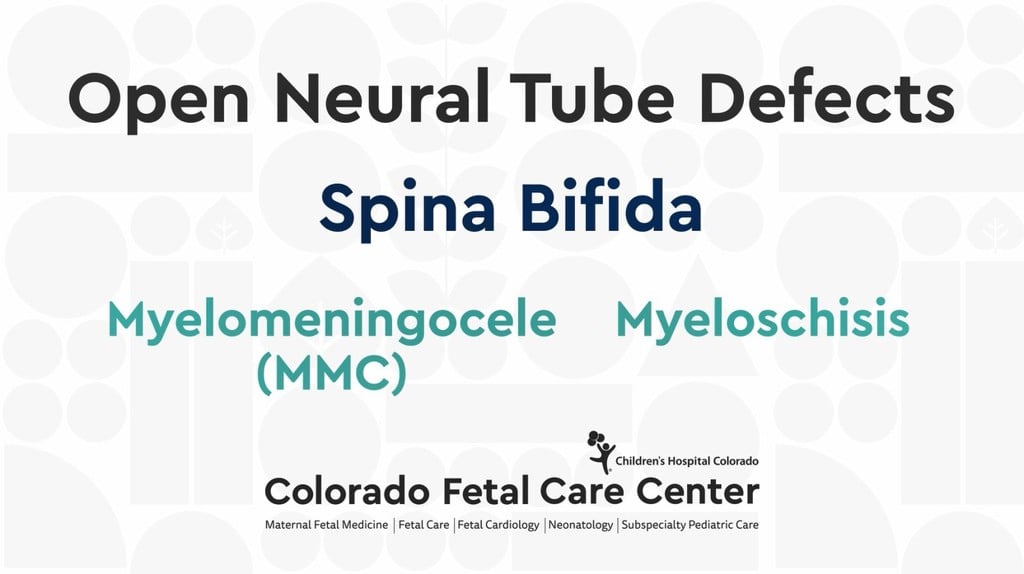- Doctors & Departments
-
Conditions & Advice
- Overview
- Conditions and Symptoms
- Symptom Checker
- Parent Resources
- The Connection Journey
- Calm A Crying Baby
- Sports Articles
- Dosage Tables
- Baby Guide
-
Your Visit
- Overview
- Prepare for Your Visit
- Your Overnight Stay
- Send a Cheer Card
- Family and Patient Resources
- Patient Cost Estimate
- Insurance and Financial Resources
- Online Bill Pay
- Medical Records
- Policies and Procedures
- We Ask Because We Care
Click to find the locations nearest youFind locations by region
See all locations -
Community
- Overview
- Addressing the Youth Mental Health Crisis
- Calendar of Events
- Child Health Advocacy
- Community Health
- Community Partners
- Corporate Relations
- Global Health
- Patient Advocacy
- Patient Stories
- Pediatric Affiliations
- Support Children’s Colorado
- Specialty Outreach Clinics
Your Support Matters
Upcoming Events
Colorado Hospitals Substance Exposed Newborn Quality Improvement Collaborative CHoSEN Conference (Hybrid)
Monday, April 29, 2024The CHoSEN Collaborative is an effort to increase consistency in...
-
Research & Innovation
- Overview
- Pediatric Clinical Trials
- Q: Pediatric Health Advances
- Discoveries and Milestones
- Training and Internships
- Academic Affiliation
- Investigator Resources
- Funding Opportunities
- Center For Innovation
- Support Our Research
- Research Areas

It starts with a Q:
For the latest cutting-edge research, innovative collaborations and remarkable discoveries in child health, read stories from across all our areas of study in Q: Advances and Answers in Pediatric Health.


Colorado Fetal Care Center
Myelomeningocele (Spina Bifida)
We see more, treat more and heal more kids than any other hospital in the region.

What is myelomeningocele (spina bifida)?
Spina bifida myelomeningocele, also called myelomeningocele (MMC) or MMC spina bifida, is a congenital (present at birth) condition of the spine and spinal cord. Spina bifida is known as a neural tube defect, which is a group of conditions that occur when the neural tube doesn’t close fully. Myelomeningocele, a serious form of spina bifida, occurs when a baby's spine, spinal cord and spinal canal don't close as they normally would.
This condition develops before birth, usually within the third or fourth week of pregnancy.
What causes spina bifida myelomeningocele?
Myelomeningocele happens when a baby’s spine doesn’t fully close and occurs very early in pregnancy. The exact cause of MMC is not fully known, but evidence suggests that genes (passed down from parents) and environmental factors may be partially involved.
Myelomeningocele occurs in the first three to four weeks of pregnancy when the spinal cord is forming. At this point, a baby's developing brain and spine are referred to as the "neural tube."
During these first few weeks of development, the two sides of a baby's back (known as the neural plate and surrounding tissues) fold to form a tube called the spinal cord. The spinal cord separates from the covering tissues, including the meninges (protective layers of membrane), bone and muscles.
MMC is a neural tube issue in which the bones of the spine don't completely form, resulting in an incomplete spinal canal. Because the spinal canal is open, the spinal cord and meninges (membranes that line the spinal canal) stick out from the baby's back.
Babies with spina bifida MMC can have a sac coming out of the opening in the spine. This sac may contain:
- Cerebrospinal fluid (fluid that surrounds the brain and spinal cord to protect them from injuries and provide nutrients)
- Nerves
- Parts of the spinal cord
How common is MMC?
Researchers estimate that worldwide, MMC occurs in about 0.8 to 1 out of every 1,000 live births. In the United States, the rate is slightly lower at 0.2 to 0.4 out of every 1,000 live births.
Myelomeningocele symptoms and complications
MMC is one of the most common birth defects, but its complications – including altered spinal cord and nerve function – can range from mild to severe.
Myelomeningocele complications include:
- Decreased spinal nerve function, including a lack of feeling in the legs and feet
- Difficulty or inability to walk
- Poor or no bladder and bowel control, known as incontinence
- Loss of the cerebrospinal fluid that surrounds the nervous system, which can cause the brain to sag downward and stretch the meninges, contributing to headaches.
- Chiari II malformation, which slows the flow of fluid out of the brain and causes hydrocephalus
- Reduced brain function from hydrocephalus, also known as "water in the brain"
- Altered spinal cord function
- Potential cognitive development issues such as delayed milestones or learning differences
- Developmental issues of the feet and legs, such as clubfoot
Does myelomeningocele affect the mother during pregnancy?
No, a pregnant mother won't experience any symptoms indicating her baby has MMC.
How do we diagnose myelomeningocele?
We usually find signs of MMC in screenings that many pregnant mothers have, such as a routine ultrasound.
Prenatal (before birth) diagnosis of MMC
Your doctor may suspect, identify and diagnose MMC based off the findings of prenatal and fetal diagnostic tests, including:
- The quadruple screen: This blood test may cause your doctor to suspect MMC and follow-up with more testing.
- Fetal ultrasound: Indicators of MMC on an ultrasound include a lemon-shaped head, a lack of movement of the lower extremities, club feet and a visible sac sticking out of the spine.
A maternal fetal medicine specialist will diagnose a baby with MMC using an ultrasound.
Post-natal (after birth) diagnosis of MMC
Your neonatologist or neurosurgeon may also diagnose MMC after your baby is born using imaging of their spine, such as:
- An MRI
- A CT scan
- An ultrasound
- An X-ray
Myelomeningocele treatment options
While an MMC diagnosis may be life-changing, myelomeningocele treatment can help your child thrive – both during pregnancy and after birth.
At the Colorado Fetal Care Center, your treatment options are more than just that – they're carefully designed strategies to give your baby the best quality of life. We have a specialized team dedicated to treating babies with myelomeningocele. As one of the nation's top fetal care centers, we offer some of the most innovative MMC treatments available.
Before deciding which myelomeningocele surgery is best for your family, our fetal care team works closely with you and other specialists. We evaluate your baby's condition and the severity of their MMC using fetal diagnostic tests like fetal ultrasound, fetal MRI and fetal echocardiography. Only then do we design and offer a treatment plan.
Prenatal myelomeningocele repair
For some families, our fetal experts recommend treating MMC before the baby is born by performing a myelomeningocele repair in utero. We recommend myelomeningocele repair before birth if it can:
- Give the baby their best chance at thriving
- Improve the likelihood of walking
- Prevent other injuries or complications
- Prevent further neural damage and more cerebrospinal fluid from leaking
- Decrease the chances the baby will need a shunt in the future to drain fluid from their brain
When a baby has a condition like MMC, their nerves could be damaged by amniotic fluid, cerebrospinal fluid and direct trauma.
We offer two options for myelomeningocele surgery before birth: open fetal surgery and fetoscopic repair. Requirements for being eligible for either surgery include:
- Healthy amniocentesis reading
- Healthy fetal echocardiogram
- Surgery is often done between 23 and 26 weeks gestation
Open fetal surgery for myelomeningocele
Open fetal surgery allows our expert fetal surgeons to perform surgery on your baby during pregnancy and place them back in the womb so they can continue developing and increase their chances for a great outcome.
What to expect from open fetal surgery for MMC spina bifida repair
Before the procedure begins, your obstetric and fetal anesthesiologist will give you anesthesia to put you to sleep and relax the uterus. The anesthesia passes through the placenta to your baby, allowing the surgical team to open the uterus, perform the in-utero MMC repair and close the uterus – all with minimal interference to your pregnancy.
During the MMC surgery, fetal surgeons will make an incision in the abdomen to open the uterus and access the defect in your baby's spine. Then a highly specialized pediatric neurosurgeon will repair the myelomeningocele, close the skin of your baby's back over the opening to protect their still-developing neural tissue. The incision on your wound is then closed.
Once the procedure is done, we leave the baby to keep growing and developing, all while monitoring closely with frequent ultrasounds. We’ll then deliver your baby via cesarean section (C-section) around 37 weeks gestation.
What are the risks of open fetal surgery?
Risks to the mother from open fetal surgery may include obstetrical complications and potential scarring that could affect future pregnancies.
There is some risk to the baby during in-utero surgery, but the team at our Colorado Fetal Care Center has successfully performed more prenatal MMC spina bifida repairs than most fetal centers in the country. In our dedicated fetal surgery suite, our team of specialists is ready and capable of handling anything that may occur during the treatment or birth process.
Fetoscopic myelomeningocele repair
Fetoscopic MMC repair is a minimally invasive procedure in which our fetal surgeons insert a small camera called a fetoscope and small surgical instruments into your uterus to repair your baby’s MMC. This surgery can provide you with more options for your delivery and for delivery for future pregnancies – fetoscopic repair allows the mother to still have a vaginal delivery whereas open surgery would then require a C-section.
What to expect from fetoscopic myelomeningocele repair?
Before the procedure begins, your obstetric and fetal anesthesiologist will give you epidural anesthesia as well as general anesthesia through an IV. This puts you and your baby to sleep and relaxes the uterus.
We’ll make a similar incision as with open surgery to bring the uterus out, but instead of opening the uterus to perform the procedure, we’ll insert the small surgical tools inside the uterus through three ports and perform the surgery that way.
After we’ve repaired the myelomeningocele, we’ll close the skin of your baby's back over the opening to protect their still-developing neural tissue and close the incision in the womb. We’ll then close the small incisions in the uterus and abdomen.
We monitor your progress in the hospital for the next 4 to 5 days, then schedule an MRI for about two weeks later. Local patients can go home after they are discharged but we prefer those who have traveled to see us stay nearby for two weeks until we do the follow-up MRI.
What are the risks for fetoscopic myelomeningocele repair?
Similar to open surgery, the main risk we face for fetoscopic repair is a premature delivery. The anticipated delivery time is about 32 to 34 weeks gestation but many pregnancies go beyond that period. It’s important to note that this is a newer procedure we are still learning about long-term outcomes.
Post-birth myelomeningocele treatment
If your fetal care team decides it’s best to repair your baby’s MMC after they're born, the treatment includes:
- Frequent ultrasounds during pregnancy to monitor your baby’s growth
- Delivering your baby via C-section at full term
- An evaluation by your baby's care team and neurosurgeon after delivery
- Surgery to close the MMC within the first two days of life
Your child's care team will also evaluate your child for signs of increased pressure in their brain (a condition known as hydrocephalus). If present, we’ll likely insert a ventriculoperitoneal shunt, which is a tube that helps drain excess spinal fluid from the brain into the abdominal cavity.
We’ll continue follow-up care at our Spina Bifida and Spinal Cord Injuries Clinic. There they'll receive follow-up care and monitoring by a multidisciplinary team of neurologic, orthopedic, pediatric and urologic specialists as well as occupational and physical therapists.
Why choose our Colorado Fetal Care Center to treat your baby's myelomeningocele?
Our fetal care team has the experience and expertise to meet all your family’s needs. From pregnancy management and diagnosis to treatment and long-term care, we have the experience, team and facilities to provide the highest quality care and achieve the best possible outcome.
Our average delivery age for babies who've undergone in-utero MMC repair is 32 to 34 weeks, meaning we give your baby as much time as possible to grow.
When you come to our Colorado Fetal Care Center for your baby's myelomeningocele care, you benefit from a dedicated team of experts who have spent years researching, innovating and performing this treatment.
Even though it’s a rare disease, the size and level of our program allows us to see more babies with MMC than most programs around the world. The more we see, the better we become at treating the condition. We also track our data and outcomes so you can see how we’re improving. For instance, shunts to help fluid drain from the brain after surgery used to be somewhat common. However, in recent years, we rarely need to place shunts, which reduces the risk for complications.
Not only does tracking and reporting our outcomes help tell you that you’re coming to the right place, it also helps us improve our processes.
Comprehensive, consistent care
We make it easier on parents, their baby and the whole family by surrounding you with the same faces every day. You'll meet with every provider on your care team on day-one. And this same team will be with you every step of the way, so they know all the details of your care. And we know your baby's needs don't end at delivery, which is why we make the transition to our Neonatal Intensive Care Unit (NICU), specialty care and home as seamless as possible.
No question goes unanswered
All our specialists and providers are under the same roof at Children's Hospital Colorado. This means that your questions are answered faster, you have instant access to our expertise and we're ready to handle anything that may arise. We’ll explain all your care options based on your baby’s condition and create a care plan with you based on your goals.
We keep families together
We know how nervous and excited you are to meet your new baby, which is why we do everything we can to get your baby safely into your arms. Children's Colorado is one of the few children's hospitals in the nation with a labor and delivery unit and if recommended, you can deliver onsite just a few steps away from our Level IV NICU. If preferred, we can also coordinate with your local provider so you can deliver your baby closer to home.
Our Labor and Delivery Unit and Level IV (four) NICU are right down the hall from each other, so you can easily visit your newborn as much as possible – and this is all under the same roof as nationally-ranked pediatric care.
If you’re interested in learning more about our fetal care specialists or would like a second opinion, please contact our Colorado Fetal Care Center at 720-777-4463.
Myelomeningocele FAQs
What's the long-term outlook for a baby with myelomeningocele?
As medical care improves, outcomes for kids with MMC are also improving. Spina bifida MMC can be a lifelong condition and the symptoms, complications and long-term outlook for MMC are different for every person. The severity of MMC complications depends on:
- The location of myelomeningocele on the spine
- The size of the vertebral opening
- The quality of surgical treatment
MMC can develop anywhere along the spinal cord, but it happens most commonly in a baby’s lower back – known as the lumbar and sacral regions. Nerve damage occurs below the point of the spine where the myelomeningocele has developed.
Therefore, babies with MMC lower in the spine tend to have less severe symptoms, while those with MMC higher in the spine tend to experience more severe symptoms because the nerve damage affects more of the spine.
For example:
- Some babies may be able to move their knees and only have problems with their ankles
- Others may have weakness of the knees
- Only 5% to 10% will have significant swallowing and breathing problems
The milder version of MMC occurs when the vertebral openings are too small for the spinal cord to pass through. In the more severe category, a portion of the spinal cord sticks out through this opening.
Babies born with mild forms of spina bifida and MMC are unlikely to suffer long-term health problems and have few limitations. Kids with severe MMC require dedicated medical care.
How many types of spina bifida are there?
Spina bifida can be closed or open. If the nerves are covered with skin or fatty tissue, the condition is considered closed. If the nerves are not covered by anything, the condition is considered open.
Open spina bifida tends to be more severe because the amniotic fluid and contact with their surroundings damage the nerves.
There are four different types of neural tube defects:
- Spina bifida occulta: Occulta means hidden. This is the mildest and most common form of spina bifida and it rarely causes complications or symptoms. This condition causes a small gap in the spine, but it's covered by a layer of skin and there's no opening or sac on the baby’s back.
- Closed neural tube defects: This form of spina bifida is a diverse group of spinal cord issues where there are changes to the fat, bone or membranes of a baby’s spine. Usually, a closed neural tube defect causes few or no complications, although some individuals may experience other symptoms including partial paralysis.
- Myeloschisis: Myeloschisis is the most severe form of spina bifida aperta, an open neural tube defect. With myeloschisis, a baby’s neural folds don't close, leaving the nerve tissue fully exposed. Kids with myeloschisis have similar issues and symptoms to those with MMC.
- Myelomeningocele (MMC): MMC is a severe open neural tube defect, occurring when the baby’s spinal cord, nerves and meninges are exposed through the opening in their spine.
What’s the difference between myelomeningocele and meningocele?
Myelomeningocele involves protrusion of the spinal cord, nerves, cerebrospinal fluid and meninges through the spinal defect. A meningocele, on the other hand, only has protrusion of cerebrospinal fluid and meninges without the spinal cord and nerves.
Can you get myelomeningocele at any age?
No, MMC and the other forms of spina bifida are congenital, meaning a baby is born with them. However, sometimes the milder forms of spina bifida occulta aren't diagnosed until after the baby is born.
Helpful resources for MMC
- The National Organization for Rare Disorders (NORD) supports the identification, treatment and cure of rare disorders such as MMC via education, advocacy, research and patient services.
- The Spina Bifida Association (SBA) aims to enhance the lives of those affected by spina bifida. SBA provides valuable resources, support services and educational materials for expectant parents with a child diagnosed with MMC, as well as the kids, teenagers and adults living with MMC. SBA also hosts yearly events for families and children affected by spina bifida. They provide a great way to meet other families facing similar challenges.
Myelomeningocele success stories
See why Liam's parents moved their whole family from California to be closer to our team.
For baby Peyton, expert spina bifida care before and after birth made all the difference. Read her story to see how prenatal spina bifida surgery and our doctor's expertise treated her myeloschisis and side-stepped a hydrocephalus scare.
Not only was Jose Alejandro diagnosed with MMC, he was also born during the COVID-19 pandemic when many fetal care centers were forced to close. Our Colorado Fetal Care Center stayed open and continued to perform lifesaving surgeries like his. Read his story here.
Next steps
-
Would you like to learn more about us?
Learn more about the Colorado Fetal Care Center -
Do you have questions about this condition?
720-777-4463 -
Want a second opinion?
Get started
Get to know our pediatric experts.

Sarkis Derderian, MD
Surgery - Pediatric, Surgery, Surgical Critical Care
Patient ratings and reviews are not available Why?

Henry Galan, MD
Patient ratings and reviews are not available Why?

Emily Bucholz, MD
Cardiology - Pediatric, Pediatrics
Patient ratings and reviews are not available Why?




 720-777-0123
720-777-0123





